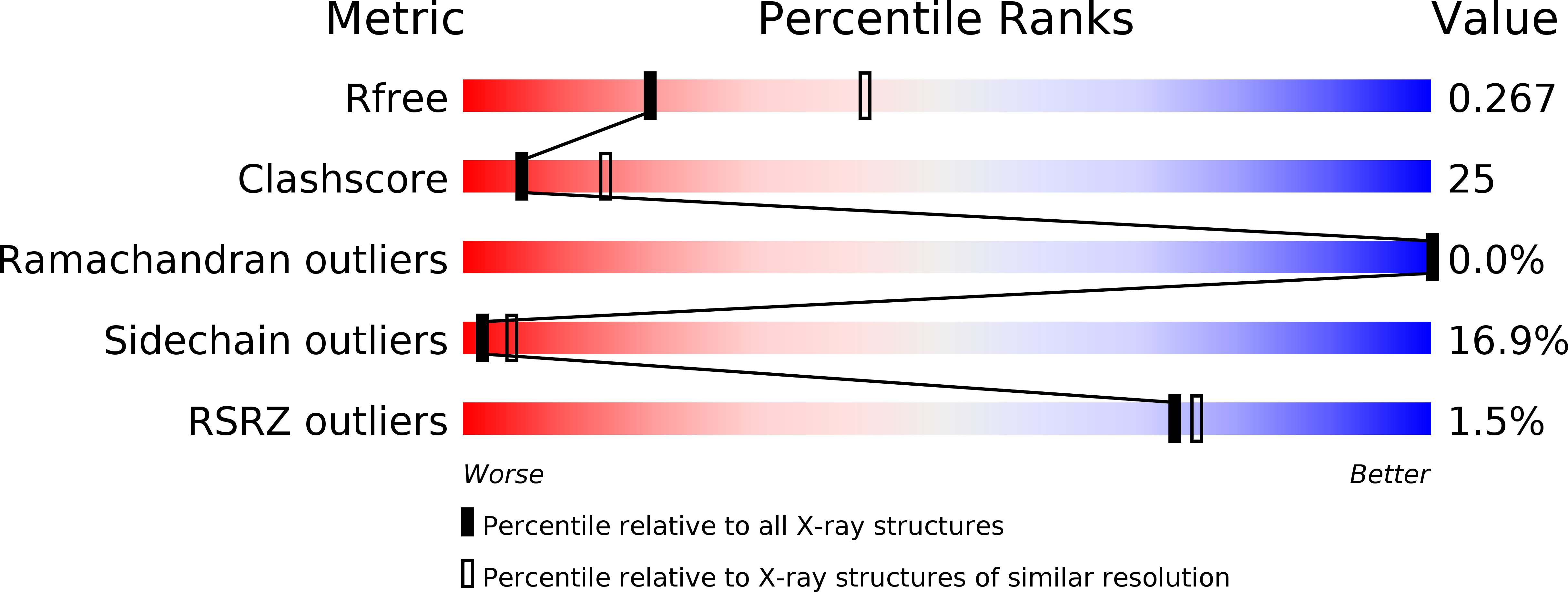
Deposition Date
2013-07-02
Release Date
2014-02-12
Last Version Date
2024-02-28
Entry Detail
PDB ID:
4LIN
Keywords:
Title:
Exploring the atomic structure and conformational flexibility of a 320 angstrom long engineered viral fiber using X-ray crystallography
Biological Source:
Source Organism:
Bacteriophage P22 (Taxon ID: 10754)
Host Organism:
Method Details:
Experimental Method:
Resolution:
2.70 Å
R-Value Free:
0.26
R-Value Work:
0.22
R-Value Observed:
0.23
Space Group:
P 1


